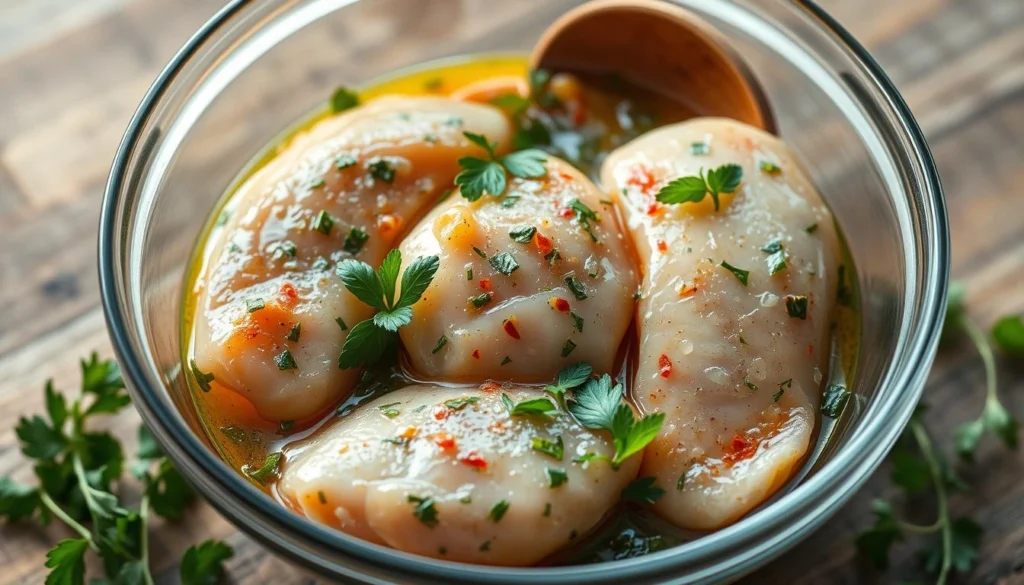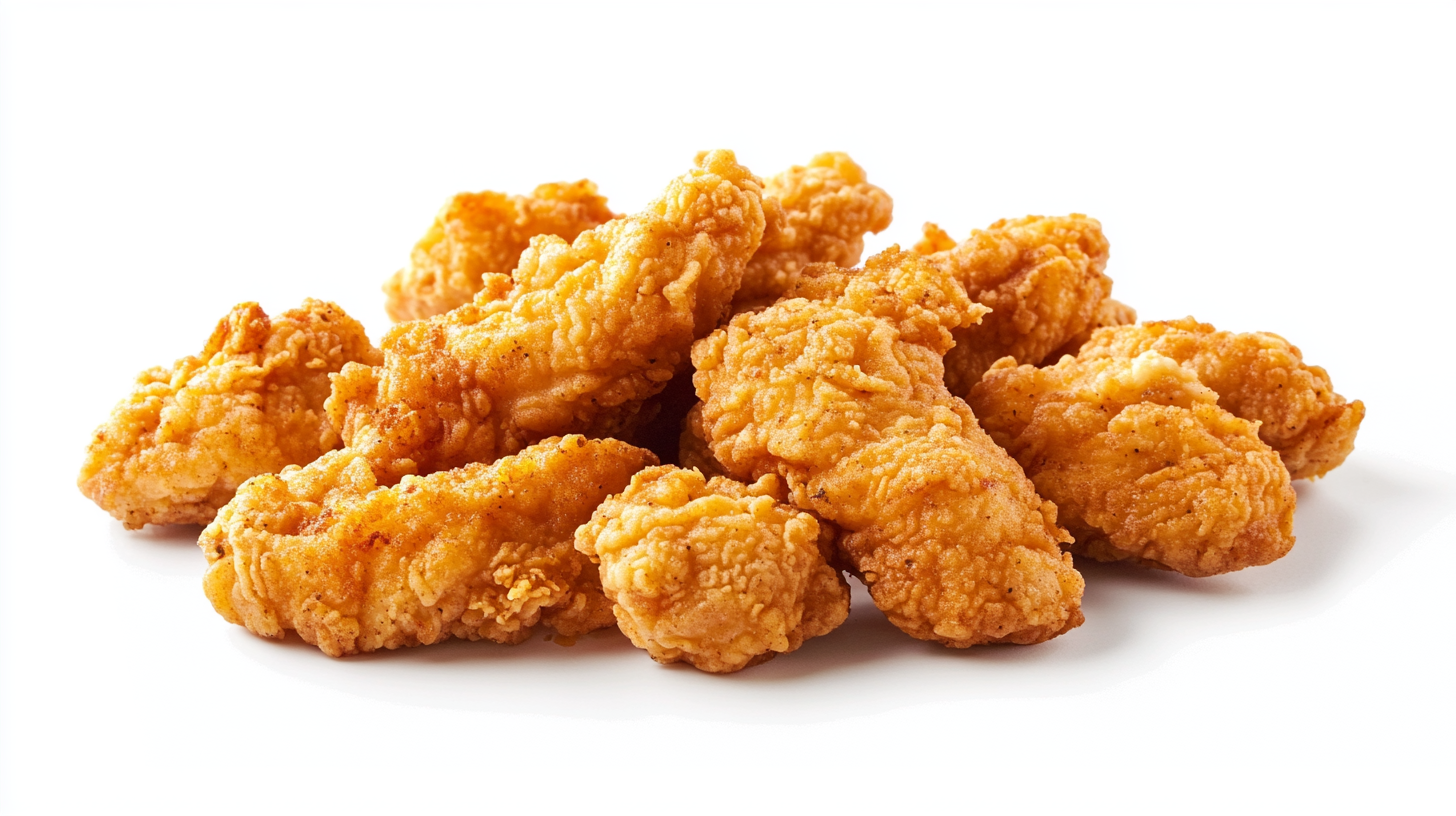Cooking delicious boneless chicken breasts at home can change how you make meals. Whether you’re new to cooking or have lots of experience, learning to cook chicken fillets is key. It ensures your chicken is juicy and full of flavour.

Preparing chicken might seem complicated, but you can make dishes and restaurants with the proper steps. This guide will teach you how to make tender chicken breasts. They’ll impress your family and friends.
Knowing how to cook chicken fillets is essential for safe and tasty meals. You’ll learn about choosing fresh ingredients and cooking at the right temperature. These tips will improve your cooking and make your chicken even better.
Table of Contents
Essential Tools and Equipment for Preparing Chicken Breasts
Preparing tasty chicken recipes needs more than just skill. The right kitchen tools can make your baked or grilled chicken stand out. Knowing the essential equipment helps you cook perfect poultry dishes with confidence.
Must-Have Kitchen Utensils
Having the right tools in your kitchen makes cooking chicken easier. Here are the essential utensils you need:
- Sharp chef’s knife for precise cutting
- Cutting board dedicated to raw poultry
- Meat thermometer for checking doneness
- Tongs for handling chicken safely
- Baking dish for baked chicken preparations
- Grill pan or outdoor grill for grilled chicken
Recommended Cooking Surfaces
Different cooking surfaces can change the flavour and texture of your chicken. Each method adds its unique touch to your dish:
- Cast iron skillet: Provides excellent heat distribution
- Stainless steel grill grates for perfect char marks
- Non-stick baking sheets for easy cleanup
- Ceramic baking dishes for even cooking
Food Safety Equipment
Keeping yourself safe from bacteria is key when cooking chicken. Here are the food safety tools you should have:
- Disposable gloves for handling raw chicken
- Separate cutting boards for raw meats
- Sanitizing wipes or spray
- Digital food thermometer
Choosing the right equipment ensures your chicken recipes are delicious but also safe and professional.
Selecting and Storing Fresh Chicken Fillets
Choosing high-quality chicken fillets is key for tasty meals. When you shop for poultry, look closely at a few critical factors. These ensure you get the best boneless chicken for your kitchen.

- Consistent pink colour without dark or discoloured patches
- Firm texture with no excess liquid in the packaging
- Fresh smell without any sour or ammonia-like odours
- Packaging should be intact with no tears or leaks
Storing chicken fillets right is vital for their quality and safety. Here’s a detailed guide to keep your poultry fresh:
| Storage Location | Temperature | Maximum Storage Time |
|---|---|---|
| Refrigerator | 40°F or below | 1-2 days |
| Freezer | 0°F or below | Up to 9 months |
Freezing boneless chicken fillets? Use airtight containers or heavy-duty freezer bags to avoid freezer burn. Always label your packages with the date of storage to track freshness.
Pro tip: Freeze your chicken fillets immediately if you won’t use them in two days. This keeps their quality and stops bacteria from growing.
Ultimate Guide to Marinating Chicken Fillets
Turning simple chicken recipes into excellent meals starts with marinating. Marinated chicken adds flavour and tenderness to your favourite flavours. Learning about marinades can make your cooking better than a restaurant’s.

The secret to great marinated chicken is knowing how marinades work. They break down proteins and add deep flavors, making chicken taste better and feel softer.
Classic Marinade Recipes
Try these popular marinades to change your chicken recipes:
- Citrus Herb Marinade: Uses lemon juice, olive oil, garlic, and fresh herbs
- Spicy Asian Marinade: Mixes soy sauce, ginger, sesame oil, and red pepper flakes
- Mediterranean Marinade: Includes olive oil, oregano, lemon, and garlic
Optimal Marinating Times
| Chicken Cut | Minimum Time | Maximum Time |
|---|---|---|
| Chicken Breasts | 30 minutes | 2 hours |
| Chicken Thighs | 1 hour | 4 hours |
| Whole Chicken | 2 hours | 8 hours |
Flavor Enhancement Techniques
Professional chefs suggest these tips for better-marinated chicken flavour:
- Use acidic ingredients to tenderise meat
- Always marinate in refrigerated conditions
- Avoid marinating with salt for extended periods
- Pat chicken dry before cooking to achieve better browning
By learning these marinating techniques, you’ll make chicken recipes that are juicy, flavorful, and unforgettable.
Basic Cooking Methods for Tender Chicken Breasts
Learning different cooking methods can make your chicken recipes unforgettable. Whether baking or grilling chicken, knowing the right way is key. It ensures your chicken is tender and full of flavour.
Each cooking method has its benefits for chicken. Let’s look at the best ways to keep your chicken breasts juicy and tasty:
- Baking: Great for easy, consistent results
- Grilling: Adds smoky taste and nice grill marks
- Pan-Frying: Gives a crispy outside and a moist inside
- Poaching: Makes chicken very tender and lean
To stay moist, grilled chicken needs high heat and quick cooking. Heat your grill to medium-high and cook the chicken for 6-8 minutes on each side. Baked chicken is best at 400°F, taking 20-25 minutes, depending on thickness.
| Cooking Method | Temperature | Approximate Time |
|---|---|---|
| Grilling | Medium-High | 6-8 minutes per side |
| Baking | 400°F | 20-25 minutes |
| Pan-Frying | Medium | 6-7 minutes per side |
| Poaching | Simmer | 10-12 minutes |
Pro tip: Always use a meat thermometer to check if the chicken is cooked to 165°F. This ensures that the chicken is safe to eat and not dry or tough.
Temperature Guidelines and Cooking Times
Cooking chicken to the right temperature is key for tasty and safe meals. Knowing the internal temperatures and cooking times can boost your cooking skills and ensure your chicken is always delicious.
Internal Temperature Requirements
Food safety is a top priority when cooking chicken. The USDA recommends cooking chicken at 165°F (74°C) to kill harmful bacteria. Use a meat thermometer to check the chicken’s thickest part.
- Whole chicken: 165°F (74°C)
- Chicken breasts: 165°F (74°C)
- Ground chicken: 165°F (74°C)
Timing for Different Cooking Methods
Cooking times change based on the method and chicken thickness. Here’s a quick guide for perfect results:
| Cooking Method | Approximate Time | Temperature |
|---|---|---|
| Oven Baking | 20-30 minutes | 375°F (190°C) |
| Grilling | 6-8 minutes per side | 400-450°F (204-232°C) |
| Pan-Frying | 8-10 minutes | Medium-high heat |
| Poaching | 10-15 minutes | Simmer |
Common Cooking Mistakes to Avoid
Prevent dry and tough chicken by avoiding these common errors:
- Overcooking: Always use a meat thermometer
- Skipping the resting period after cooking
- Not pounding chicken to an even thickness
- Cooking chicken directly from the refrigerator
Mastering these temperature guidelines and cooking techniques will help you make restaurant-quality chicken. Your dishes will be safe and delicious.
Serving Suggestions and Side Dish Pairings
Turning your chicken dinner into something special needs the right side dishes and creative plating. The right sides can make your chicken dishes unforgettable.
Here are some exciting side dish pairings that go great with chicken fillets:
- Roasted Vegetable Medley: A colourful mix of seasonal vegetables adds nutrition and visual appeal
- Creamy Garlic Mashed Potatoes: A classic comfort side that harmonises with most chicken preparations
- Quinoa Salad: A light, protein-rich alternative for health-conscious diners
- Mediterranean Couscous: Brings exotic flavours to your chicken dinner
Plating techniques can make a big difference. Use white plates to make your chicken dishes stand out. Add fresh herbs like parsley or chives for colour and flavour.
When picking sides, aim for a mix of textures and flavours. Pair crispy chicken with soft, creamy sides or grilled chicken with crunchy vegetable accompaniments. You strive to create a harmonious chicken dinner that pleases taste buds and the eyes.
- Pro Tip: Always slice chicken against the grain for maximum tenderness
- Experiment with different herb and spice combinations
- Consider your guests’ dietary preferences
Related Article: Easy Chicken Hearts Recipe
Conclusion
Cooking perfect chicken fillets is an art that requires technique, knowledge, and passion. You can make fabulous meals by learning how to prepare, cook, and flavour chicken. Your skills will make your home cooking stand out and impress everyone.
Use your new skills to enjoy making delicious meals. With time and practice, you’ll turn chicken into a canvas for your creativity. Keep learning and experimenting to make your cooking even better.
FAQ
What do you think is the best way to make sure my chicken fillets are tender and juicy?
Use a meat thermometer to keep chicken fillets tender and juicy. Remove the chicken from heat when it reaches165°F (74°C). Let it rest for 5-10 minutes before serving.
How long can I store raw chicken fillets in the refrigerator?
Fresh chicken fillets should be stored in the fridge for 1-2 days. If needed, you can freeze them for up to 9 months. Always keep raw chicken in the coldest part of your fridge.
What’s the safest method to thaw frozen chicken fillets?
The safest way to thaw chicken fillets is in the fridge. A full package takes about 24 hours to thaw. If you need it faster, use cold water.
Can I marinate chicken fillets overnight?
You can marinate chicken fillets overnight, but be careful with acidic marinades. Lemon juice or vinegar can make the meat mushy if left too long. For most marinades, 4-8 hours is best.
What’s the difference between chicken fillets and chicken breasts?
Chicken fillets are smaller, more tender pieces of meat that can be part of a chicken breast. Although the term is often used with chicken breasts, technically, a fillet is boneless and skinless.
How can I prevent chicken fillets from drying out when cooking?
To prevent dry chicken, pound the fillets to an even thickness. Bringing and using marinades can also help. Avoid overcooking.
Is it safe to wash chicken fillets before cooking?
The USDA advises against washing raw chicken fillets. Washing can spread harmful bacteria like Salmonella. Instead, could you remove the chicken from its packaging and pat it dry with paper towels if needed?

